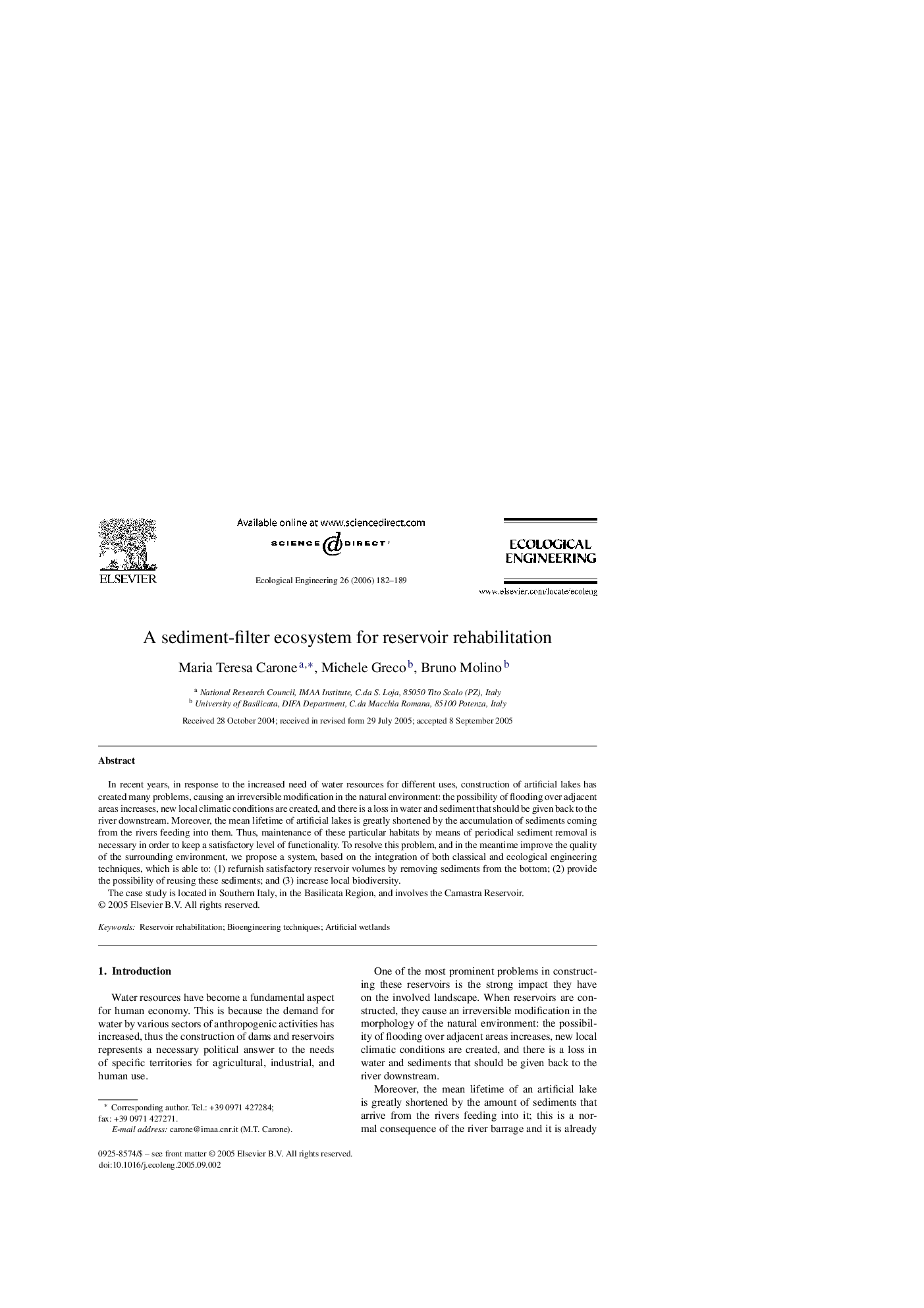| Article ID | Journal | Published Year | Pages | File Type |
|---|---|---|---|---|
| 4391345 | Ecological Engineering | 2006 | 8 Pages |
In recent years, in response to the increased need of water resources for different uses, construction of artificial lakes has created many problems, causing an irreversible modification in the natural environment: the possibility of flooding over adjacent areas increases, new local climatic conditions are created, and there is a loss in water and sediment that should be given back to the river downstream. Moreover, the mean lifetime of artificial lakes is greatly shortened by the accumulation of sediments coming from the rivers feeding into them. Thus, maintenance of these particular habitats by means of periodical sediment removal is necessary in order to keep a satisfactory level of functionality. To resolve this problem, and in the meantime improve the quality of the surrounding environment, we propose a system, based on the integration of both classical and ecological engineering techniques, which is able to: (1) refurnish satisfactory reservoir volumes by removing sediments from the bottom; (2) provide the possibility of reusing these sediments; and (3) increase local biodiversity.The case study is located in Southern Italy, in the Basilicata Region, and involves the Camastra Reservoir.
